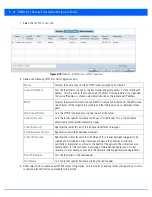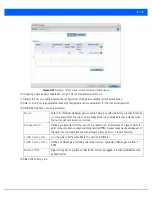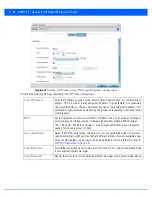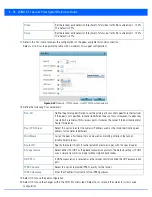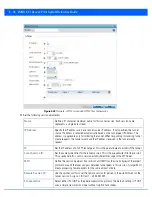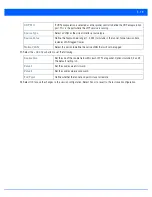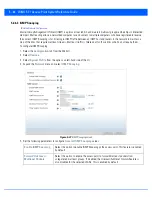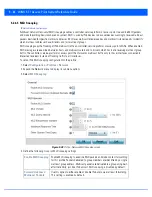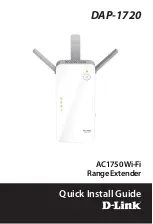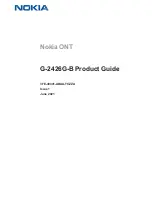
5 - 86 WiNG 5.7.1 Access Point System Reference Guide
5.2.6.7 Spanning Tree Configuration
The
Multiple Spanning Tree Protocol
(MSTP) provides an extension to RSTP to optimize the usefulness of VLANs. MSTP allows
for a separate spanning tree for each VLAN group, and blocks all but one of the possible alternate paths within each spanning
tree topology.
If there is just one VLAN in the access point managed network, a single spanning tree works fine. However, if the network
contains more than one VLAN, the network topology defined by single STP would work, but it’s possible to make better use of
the alternate paths available by using an alternate spanning tree for different VLANs or groups of VLANs.
A MSTP supported deployment uses multiple MST regions with multiple
MST instances
(MSTI). Multiple regions and other STP
bridges are interconnected using one single
common spanning tree
(CST).
MSTP includes all of its spanning tree information in a single
Bridge Protocol Data Unit
(BPDU) format. BPDUs are used to
exchange information bridge IDs and root path costs. Not only does this reduce the number of BPDUs required to communicate
spanning tree information for each VLAN, but it also ensures backward compatibility with RSTP. MSTP encodes additional
region information after the standard RSTP BPDU as well as a number of MSTI messages. Each MSTI messages conveys
spanning tree information for each instance. Each instance can be assigned a number of configured VLANs. The frames
assigned to these VLANs operate in this spanning tree instance whenever they are inside the MST region. To avoid conveying
their entire VLAN to spanning tree mapping in each BPDU, the access point encodes an MD5 digest of their VLAN to an instance
table in the MSTP BPDU. This digest is used by other MSTP supported devices to determine if the neighboring device is in the
same MST region as itself.
To define the spanning tree configuration:
1. Select the
Configuration
tab from the Web UI.
2. Select
Devices
.
3. Select
System Profile
from the options on left-hand side of the UI.
4. Expand the
Network
menu and select
Spanning Tree
.
Summary of Contents for WiNG 5.7.1
Page 1: ...WiNG 5 7 1 ACCESS POINT SYSTEM REFERENCE GUIDE ...
Page 2: ......
Page 3: ...WING 5 7 1 ACCESS POINT SYSTEM REFERENCE GUIDE MN001977A01 Revision A April 2015 ...
Page 4: ...ii WiNG 5 7 1 Access Point System Reference Guide ...
Page 24: ...1 4 WiNG 5 7 1 Access Point System Reference Guide ...
Page 36: ...2 12 WiNG 5 7 1 Access Point System Reference Guide ...
Page 72: ...3 36 WiNG 5 7 1 Access Point System Reference Guide ...
Page 470: ...5 386 WiNG 5 7 1 Access Point System Reference Guide ...
Page 472: ...6 2 WiNG 5 7 1 Access Point System Reference Guide Figure 6 1 Configuration Wireless menu ...
Page 624: ...7 46 WiNG 5 7 1 Access Point System Reference Guide ...
Page 724: ...9 56 WiNG 5 7 1 Access Point System Reference Guide ...
Page 783: ...12 35 Figure 12 46 Device Summary screen 4 Click File Management ...
Page 816: ...12 68 WiNG 5 7 1 Access Point System Reference Guide ...
Page 1006: ...13 190 WiNG 5 7 1 Access Point System Reference Guide ...
Page 1026: ...14 20 WiNG 5 7 1 Access Point System Reference Guide ...
Page 1028: ...A 2 WiNG 5 7 1 Access Point System Reference Guide ...
Page 1089: ......
Page 1090: ...MN001977A01 Revision A April 2015 ...

